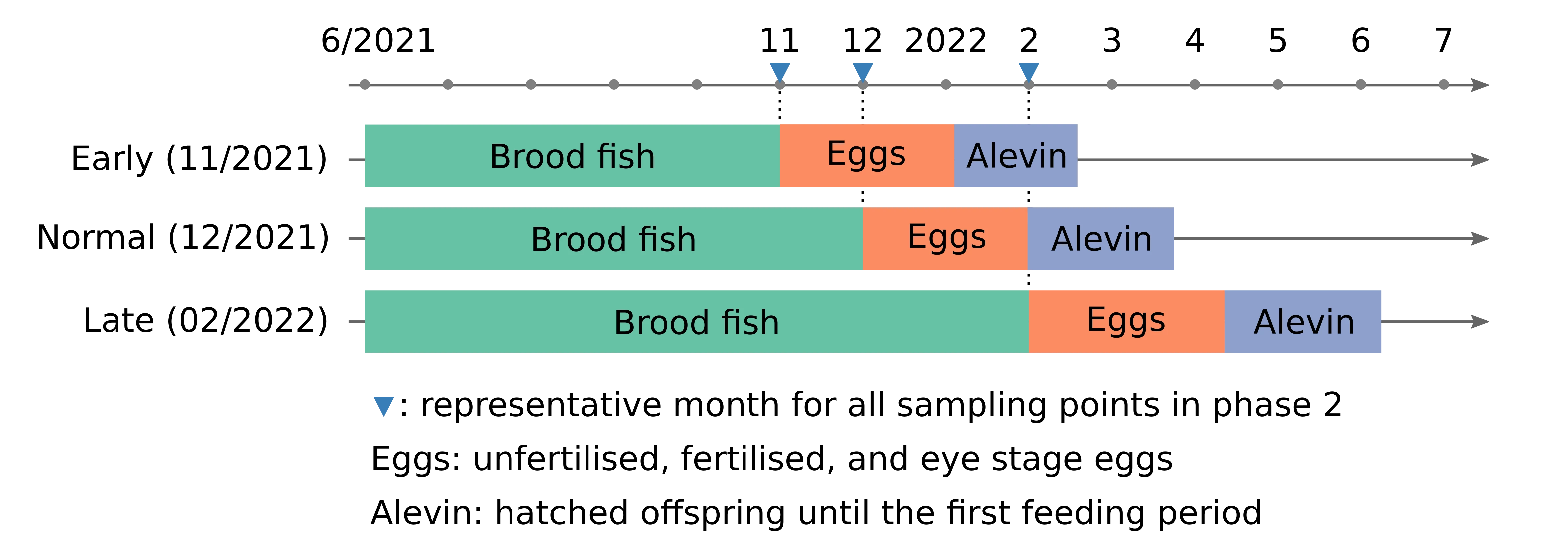About this site
The Stamfisk website provides valuable resources on the nutritional aspects of Atlantic salmon (Salmo salar) broodstock and their offspring, observed during an extensive feeding experiment spanning over two years. This experiment comprises two main phases: (i) the saltwater period for female broodstock fish, and (ii) the subsequent spawning in the freshwater environment, along with the early development stages of their offspring.
Experimental design
Phase 1: Saltwater period of broodstock
This phase involves the nutrient analysis of female brood fish during the saltwater period, with five sampling points ranging from January 2020 to June 2021.
Fish were fed two different diets: brood fish and grow-out diets until September 2020. The former group was referred to as long-term feeding (LF), while the latter was referred to as short-term feeding (SF).

Phase 2: Spawning and offspring in freshwater
The second phase includes three different spawning seasons that were artificially adjusted based on salinity, temperature, and light regimes. Spawning was advanced by one month for the early season and delayed by three months for the late season, compared to the normal season in December.
As the feeding groups of from the first phase were kept, Phase 2 contained six groups in total, two each for a spawning season. Sampling was performed on both broodstock and their offspring.

Imputation of <LOQ values
Significance of handling <LOQ (limit of quantification) values
Various methods have been proposed for handling <LOQ values.
The choice of which imputation method to apply in a study can significantly impact its results.
At the Stamfisk site, a random sampling approach is employed when dealing with <LOQ values.
This involves converting the <LOQ value to a random number between 0 and the LOQ.
For example, if the value is “<1.5”, the original values is replaced with a random value between 0 and 1.5.
Furthermore, the random function is called with a fixed seed “1234” to ensure deterministic results.
Site contents
This sites offers the data and statistical analyses in the following five categories.
Upcoming release of the following categories
The pages within the specified categories will be made available upon completion of the respective manuscripts, when they are ready for submission.
- Minerals
- Free amino acids and N-metabolites
- Protein and total amino acids
- Water-soluble vitamins (vitamin B & C)
- Fat-soluble vitamins (vitamin D, E & K)
In addition to the four main categories above, the site also provides two additional datasets.